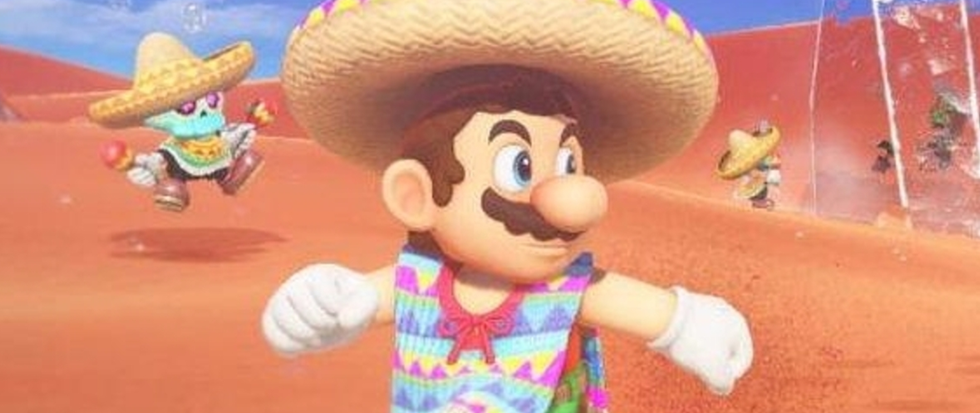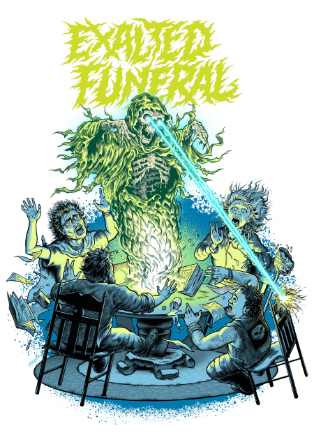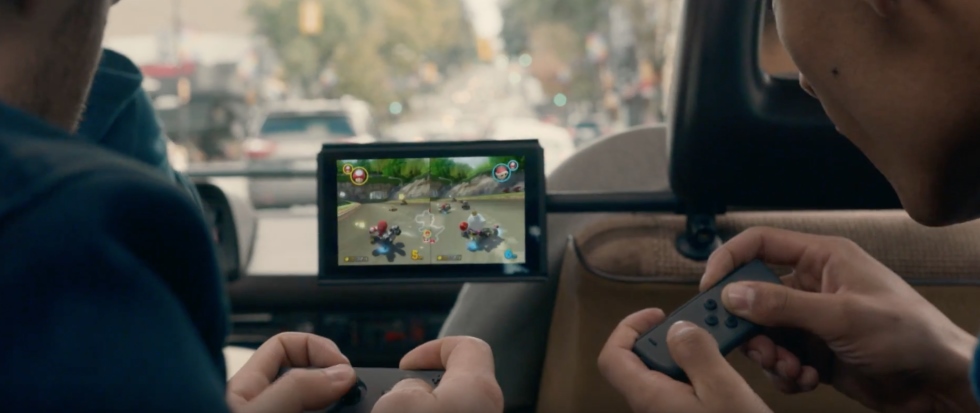
Video Game Journos and Giving Mario a Pass
Videogames have a bad track record when it comes to representation and cultural appropriation. Throwaway lines in artbooks are clear reminders that the culture of one or many is just a neat design to someone else. Luckily, in today’s more socially aware culture, writers and editors all over the Internet took the chance to say something about it when something problematic pops up in a major release, right?
No.
Mario in a sombrero and poncho fails the basic “my culture is not a costume” test. Mario is wearing a costume appropriated from a culture that he doesn’t belong to in a game largely developed in yet a different country. He’s wearing a costume that is a caricature of a stereotype.

Instead, Wired is the only publication that thought it merited more than a passing mention. Julie Muncy says that “[Super Mario Odyssey] has problems with cultural representation, largely in a desert-themed world that plays as a clumsy mashup of Latin American and Pacific Islander stereotypes.”
Muncy, unlike the writers and editors of nearly every other major outlet, found the time to write a paragraph about how poorly the game handled its sombrero wearing protagonist:
“this reads not so much as deliberate racial insensitivity as just obviousness: the game is so caught up in its own dream logic that it fails to recognize that these are real cultures that are being playfully considered, mashed together, and then tossed away an hour later” during part of her otherwise glowing review.
Muncy ultimately concludes that it’s a trip-up in an otherwise great game. That’s wonderful. That’s the criticism we need in games. We need to able to call out the pros and the cons, even if we decide that a piece is ultimately a net positive despite the ways that creative endeavor is problematic. Instead, the silence of publications that have been lauded for the inclusivity and diversity is deafening. You cannot be an ally only when it suits you.
Whether or not you find Mario in all but brown face to be particularly offensive relies on your personal taste and experience. I won’t grandstand and tell you it is or is not offensive to you. That’s for you to decide. Maybe the fact that some plucky skeletons want him to join in on the fun pushes it from caricature to homage for you.
What is not subjective to taste is the gaping void created by the lack of conversation. Despite noise and static over the summer of the sombrero being pulled from the game’s cover (I wonder why?) and its inclusion hardly anyone found it relevant to their in-depth review of the game. Not even granting a passing mention, or simply granting a flippant one as one website did, is tantamount to fully condoning what can come off as a “but we’re celebrating you!”
Charitably, we can imagine that some of these writers and editors simply didn’t think to mention it because it didn’t occur to them as possibly offensive. I understand this but it only speaks to the monolithic insensitivity that comes with an experience that has never known discomfort or inner pain whenever El Jarabe Tapatio came on in elementary school and every single person looked at you. While not malicious, the silence is still heard. Where are the writers who are or could be cognizant of such insensitivies and are they being given “important” reviews like this one?
Even more charitable is the idea that no one thought it was their place to speak on the subject. Who gets to determine that? If all the “allies” are silent but still take the time to write the articles, get published, and get paid how much room did they really make for diverse voices? Am I allowed to speak up because, despite my Mexican heritage, I’ve lived my entire life under the Shimomura name and not Melendez? I’ve spent most of my professional career downplaying my heritage because of a perceived lack of currency and credibility. No more. If the point is to buoy up diverse voices I hope to see these writers and editors take the time to mention how they made room for me and share this.

Oh but this is a callback you may say. Yes, and it was wrong then too. It was wrong when Mario wore a Native American style headdress too, while we’re on the subject. History is painful and the pain of history should enable us to be unafraid to call out the insensitive present towards a more equitable future. How can we do that when no one wants to even ask the question? None of the other costumes in Super Mario Odyssey are as appropriated as this one, why can’t we talk about it? Why haven’t we confronted the inappropriate and racist things our beloved icon has done? We might weigh him and find him worthy, but we can only do that if we are honest about his and our histories.
So while Super Mario Odyssey is getting stellar reviews and accolades from all the writers, editors and publications, keep in mind that the vast majority of them didn’t bother to consider that aspects of the game might be deeply offensive to some. To many of my friends and colleagues, the game stands as “perfect” even as it reminds some that their culture – my culture – is one that America is literally prototyping a wall to keep out. For too many, my culture is no more than a theme park and that is a deeply painful and ignorant wound that will not soon be forgotten.





